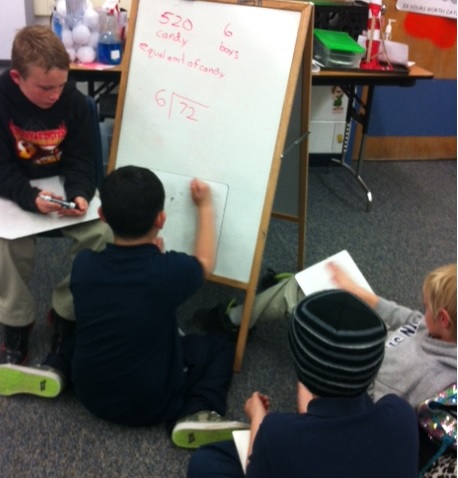"Will this effect my grade?"
" Can I (he/she) have extra credit?"
"How many points is this worth?"
We hear questions like this all the time from both students and parents! Students are focused on the extrinsic motivation of grades, while well meaning parents often perpetuate this focus based on their own school experiences.
In chapter 4, Solarz discusses how this focus on grades is actually detrimental to students. He explains that when students focus on only grades, they often find ways to work the system, missing the educational value of the lesson.
This spoke to me as a parent. One of my boys realized that when he moved schools (for a grade level change), they didn't have a record of his previous AR tests. He didn't read AT all the first semester, but managed to get an A in reading because he simply took tests he had already taken on books he had read in prior years. Did this help him become a better reader at all??
Another one of my sons is exceptionally smart and often scores in the top 95% on standardized tests, but he failed English last year because he doesn't care about grades and refused to do any work. Solarz also mentions those other smart kids who never go above and beyond because they have already earned an A. Don't we want ALL of our students to improve?
In this chapter, Solarz tells us how to shift the focus from grades to improvement.
In Paul's class, students don't take many tests or quizzes, and they don't receive grades on any of their work or projects. Instead, they receive regular feedback. He says they take the time they used to spend studying, taking tests, and going over tests, and instead devote that time to working and learning more. He is speaking my language! I do wonder though, how this translates to grades, because at my school, we still have to give them.
ePortfolios
One of the methods Paul uses in his classroom to provide feedback to his students is through e Portfolios. Students collect their work in ePortfolios. He says that everything is done on-line and published immediately. Using these ePortfolios, students can look at other students' work. He calls this student collaboration as opposed to cheating. He wants his students to be able to learn from each other.
He says that students can go back and revise pieces as they learn more with the hidden bonus that he doesn't have to provide worksheets for practicing basic skills, like capitalization and ending punctuation, when students can go back and correct their own work.
I just received an old class set of laptops from another teacher, but I am not sure how well they work, or what sites are blocked from school that I might want to use for ePortfolios, so that is something I will have to investigate before school starts again. I am also thinking of ways to do this without technology in case they don't work as well as I am hoping. You always need a plan B right? I am thinking about possibly binder portfolios that are accessible to everyone.
In Paul's class, students reflect on their own work. He describes this process using both assignment specific questions as well as a more generic reflection process. I think it is a great way to get a student to think more deeply when they reflect on what they have done. I will definitely be incorporating more of this next year.
I also love how the reflection process he provides has multiple steps, because this is something my students really struggled with during common assessments last year. They wanted to skip steps. This will provide training and experience for them.
Things I Want To Consider
1. How can I encourage students to keep improving their assignments, even after a unit has been completed?
2. How will grades work in my classroom?
Make sure to check out what other bloggers have to say about this chapter over at The Primary Gal's blog!
If you would like to see my thoughts from other chapters, check them out below:
Chapter 1 - What is a Student-Led Classroom?




























